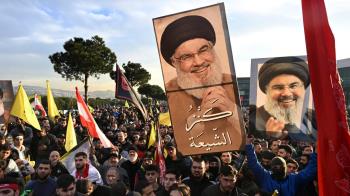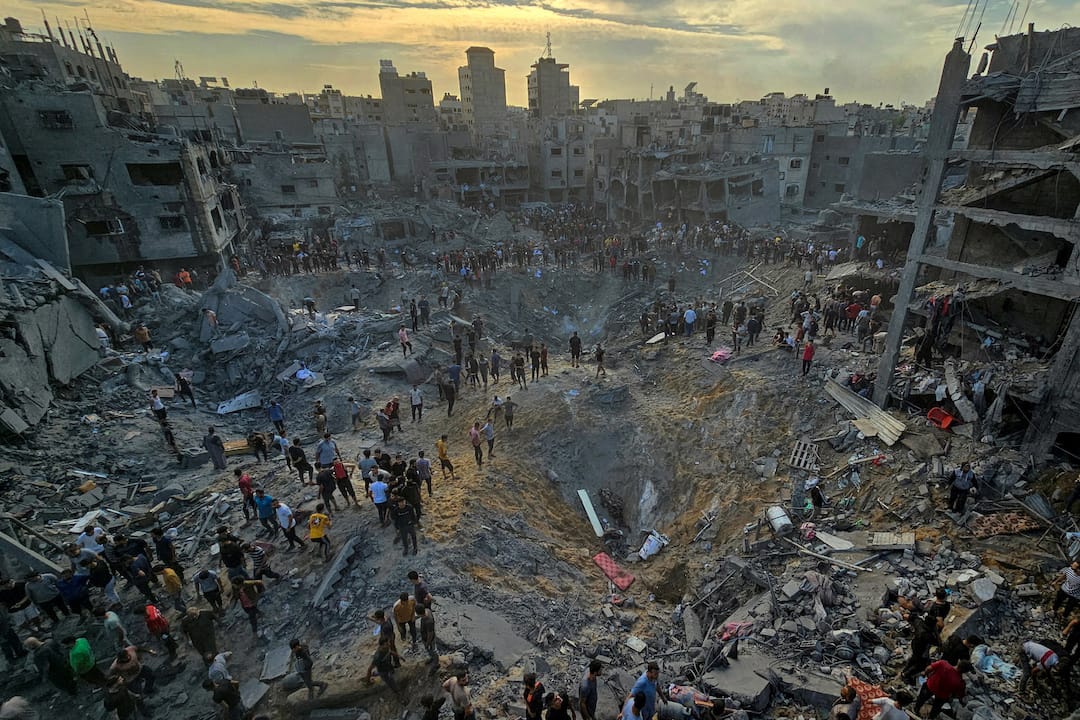The globe faces the grimmest circumstances of warfare and strife in the last fifty years, as conflicts escalate in Ukraine and the Middle East, tensions simmer between China and the United States, and the potential resurgence of "Donald Trump" to the White House casts a dark cloud over the turbulent conditions.
The globe has plunged into a period of chaos and unrest. Armed conflicts worldwide have captivated millions, subjecting them to a relentless and lethal existence; Gaza stands as a glaring wound on our shared conscience. From Ukraine to the shores of the Horn of Africa, Libya, the Democratic Republic of the Congo, Yemen, Burma, Haiti, and the Balkans, governments exist that disregard multilateral frameworks with no sense of accountability, thus undermining them.
These statements summarize the most recent perspectives of António Guterres, the Secretary-General of the United Nations, delivered during his annual address outlining priorities for 2024 at the United Nations Security Council. The query now arises: What conditions and attributes characterize the tumultuous world as defined by the Portuguese diplomat of the United Nations? A world, as depicted by the Spanish newspaper El País, confronting the direst scenario of warfare and conflict in the past fifty years, with the strategic intricacies of conflicts in Ukraine and the Middle East, tensions and discord between China and the United States, and the potential resurgence of Donald Trump to the White House, casting a bleak and precarious outlook.
The globe is confronted with two simultaneous geopolitical crises of great importance
The globe is currently grappling with two major geopolitical crises, with one unfolding in Ukraine and the other in the Middle East. Moreover, there are concerns looming over the Korean Peninsula as threatening language is exchanged between the northern and southern neighbors. Taiwan remains a center of tension following the opposition party's victory against China's alliance for the third consecutive time. Humanity still endures various conflicts, including internal turmoil devastating Sudan. Thus, the present global situation reflects a landscape marked by confrontation and conflicts among major and intermediate powers.
According to El País, Europe finds itself embroiled in its most significant conflict since 1945. While approximately 30 Western nations have committed to aiding Ukraine, the support from America for Kyiv is diminishing, thereby strengthening Moscow's position. This situation has prompted some European political and military figures to caution their citizens about the genuine risk of conflict spreading to Western Europe. The potential return of Donald Trump to the White House, with his lessened emphasis on America's NATO commitment, adds further complexity to the scenario.
German Defense Minister Boris Pistorius recently suggested that the North Atlantic Treaty Organization (NATO) could find itself engaged in a full-scale military confrontation with Russia within the next five to eight years. Danish Defense Minister Trine Bramsen also indicated that fresh intelligence indicates Russia might launch an attack on a NATO member state within three to five years. Swedish Defense Minister Carl-Oskar Bohlin similarly hinted last month at the possibility of a "war" occurring in the Nordic nation.
According to Antony Blinken, the Secretary of State of the United States, the Middle East is presently facing its "most perilous situation since 1973, and possibly even earlier." Despite over 75 years passing, there has been no solution found for the wounds of Palestine. Western nations, by turning a blind eye to the suffering of this nation, have empowered the Zionist regime to carry out more shameless and cruel actions. The conflict between the Zionist regime and Palestine has escalated, pulling numerous countries directly into the fight. While Yemen targets Zionist vessels or those bound for occupied territories in solidarity with the Palestinian cause, the United States has retaliated by bombing targets in Yemen, Iraq, and Syria. According to reports from the Spanish newspaper, tensions have also placed Tehran and Washington on a perilous collision course. While both sides have indicated a reluctance to escalate the confrontation, there are elements beyond their influence in the region deliberately stoking these tensions.
Turbulence in East Asia
In the East Asian region, North Korea has experienced a sudden change in direction in recent weeks, marked by the removal of the "peaceful reunification" commitment from its constitution and the development of new weaponry. North Korea has solidified its nuclear power status in its constitution and has conducted multiple ballistic missile tests in the past few months. Consequently, relations between Pyongyang and Seoul have deteriorated to their lowest level in decades. In the southern region, Taiwan is engaged in a non-violent yet intense rivalry between the two superpowers, China and the United States. As Graham Allison, former Deputy Secretary of Defense, highlighted at the Davos World Economic Forum, this scenario during a period of power transition poses the most perilous form of risk.
Furthermore, there have been other wars with horrifying human consequences and significant geopolitical ramifications in recent decades, ranging from Afghanistan and Iraq to the Balkans, Congo, and Syria.
Gathering precise data regarding the human casualties of these conflicts presents a formidable challenge and currently represents a distressing reality, even when considering these figures. According to research conducted by the Oslo Peace Research Institute in 2022, that year marked the highest death toll from state wars (involving at least one state actor) since the early 1970s, excluding 1984. In 2023, while conflicts in Ethiopia showed signs of easing, the Gaza conflict intensified. The global number of refugees and displaced individuals has surpassed 100 million, reaching an unprecedented level in history.
Meia Nouwens, an expert affiliated with the International Institute for Strategic Studies, suggests that we are entering an era characterized by more significant interstate conflicts. We find ourselves in a period of direct competition among major nations, a development that is cause for concern. Notably, we are observing a heightened level of collaboration between nations such as China and Russia. Meanwhile, longstanding arms control agreements between the US and Russia are unraveling, with no indication of new agreements being reached with China.
Sergey Radchenko, a Cold War scholar and faculty member at the Johns Hopkins School of Advanced International Studies, suggests, "The current period diverges from the Cold War era. Unlike then, there is no ideological confrontation; instead, there is a mutual interdependence that was absent at that time. Nonetheless, there are parallels; for instance, the power struggle among states and the pivotal role of nuclear issues in shaping this conflict." He emphasizes, "The future remains uncertain, and the situation may not necessarily be headed towards severity. Positive indicators such as efforts by Washington and Beijing to mitigate tensions and signals from the United States and Iran indicating a reluctance to escalate tensions, along with initiatives to seek negotiation solutions for the Gaza crisis, are apparent."
However, according to El País, it is apparent that there are actors committed to causing destabilization, and one cannot ignore the possibility of others joining them or inadvertently exacerbating tensions. The potential return of Donald Trump to the White House, lacking commitment to NATO, adds further complexity to the situation. The Washington Post, in response to contentious statements by this presidential candidate advocating for Russia to attack NATO members if they fail to pay their military dues, has reported an increase in fear and apprehension in Europe, questioning the reliability of the United States.
Hence, if we regard the Korean War (1950-1953) or the Cuban Missile Crisis (1963) as embodiments of global tension, more so than the current situation, the phase we are currently entering exhibits traits of unforeseen risks reminiscent of the concluding stage of the Cold War crisis and the era of American dominance as the singular global power.



























